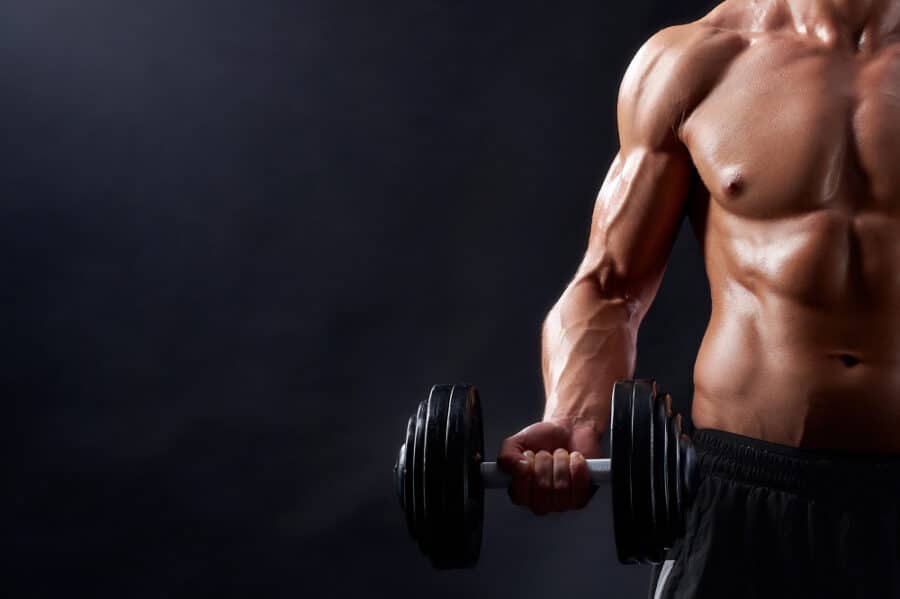Are you tirelessly working towards smashing your weightlifting goals yet find yourself hitting a plateau? It might just be that you’re missing a critical piece of equipment—a lifting belt.

The Right Belt For Your Lifting Goals
You might have seen seasoned lifters strap on these belts, their faces set with determination as they approach the barbell. This isn’t just about looking like a pro but about making a smart choice for your body and your lifting ambitions.
This guide will help you find the right belt for your weightlifting journey. Whether you’re pressing barbells or squatting weights to set your personal record, the perfect lifting belt can be a game-changer.
So, let’s unlock the secret to elevating your lifting game with the perfect lifting belt tailored to your needs.
Understanding The Purpose Of A Gym Weight Belt
A gym weight belt is more than just an accessory. It helps ensure your safety and boost your performance during workouts.
Wearing a gym weight belt stabilizes your lower back, an essential factor during heavy lifting. This is achieved through increased intra-abdominal pressure, which acts like a supportive wall around your midsection.
This way, you can lift heavier weights while maintaining proper form. The belt’s role isn’t just about preventing injuries. It’s also about empowering you to reach your full lifting potential, making it an essential component in your weightlifting gear.
Assess Your Lifting Style And Goals
When choosing a belt, it’s important to evaluate your lifting style and objectives. Are you a powerlifter aiming for maximum weight or a bodybuilder focusing on form and repetitions? Regardless, your choice should align with these goals.
Powerlifting requires a belt that offers robust support for handling heavy loads. On the other hand, bodybuilding might benefit from a belt that provides flexibility and comfort.
Furthermore, consider the nature of your workouts. Are they compound, heavy lifts, or varied, dynamic movements? This self-assessment will help you choose a belt that complements and enhances your lifting regimen, ensuring safety and training efficiency.
Selecting The Right Material And Build
When looking for the right lifting belt, it’s crucial to consider its material and build. You can choose between leather and nylon, two of the most popular options in the market.
Leather belts, revered for their rigidity and endurance, are often the go-to choice for heavy lifters seeking maximum support. Their sturdy nature ensures a firm, unyielding grip around your waist, perfect for lifts that demand significant strength.
On the other hand, nylon belts offer a more versatile approach. They’re lighter and more flexible, ideal for dynamic movements, providing a balance of support and comfort. This flexibility makes them a favored option for activities that require a broader range of motion.
Ultimately, your selection should align with your specific lifting practices and personal preferences.
Ensuring The Perfect Fit
Finding the ideal fit for your lifting belt is crucial. Measure your waist at the navel, as this is where the belt will sit during lifts. Don’t rely solely on your pant size when checking sizes to avoid inaccuracies. The right lifting belt should be snug but not so tight that it hinders breathing or movement.
A proper fit means you can slip a few fingers under the belt when it’s fastened. This ensures it’s tight enough to provide support yet flexible enough to allow a full range of motion. Remember, a well-fitted belt is a cornerstone in your lifting regimen, offering the necessary support while maximizing comfort and effectiveness.
Getting Used To Your New Belt
Getting used to your new belt requires a period of adjustment. At first, you might feel some discomfort or restriction in movement. So, start with lighter weights to allow your body to acclimate to the belt’s presence.
As you increase the weight, pay attention to how the belt affects your posture and breathing. This ensures your new belt supports you effectively without compromising your technique. Over time, it’ll become a natural extension of your lifting gear.
Consistency in this phase is key to maximizing the benefits the belt offers in enhancing your lifting performance.
Maintaining Belt For Longevity
Maintaining your lifting belt is vital for ensuring its longevity and effectiveness. If you own a leather belt, regular conditioning is key to preventing cracks and wear. Apply a suitable leather conditioner every few months to keep the material supple and durable.
For nylon belts, frequent cleaning is essential. Wipe it down with a damp cloth after each use to remove sweat and dirt, and occasionally use a mild detergent for a deeper clean. Avoid exposing your belt to extreme temperatures or moisture, as these can degrade the material over time.
Final Thoughts
Selecting the right belt for your lifting goals is a decision that should not be taken lightly. It’s about finding a balance between support, comfort, and suitability for your lifting style. With the right belt, you can enhance your performance, prevent injuries, and achieve your lifting objectives more effectively.
Remember, a belt is a tool to aid your lifting journey, not a magic solution. Use it wisely and watch your lifting goals become a reality.

